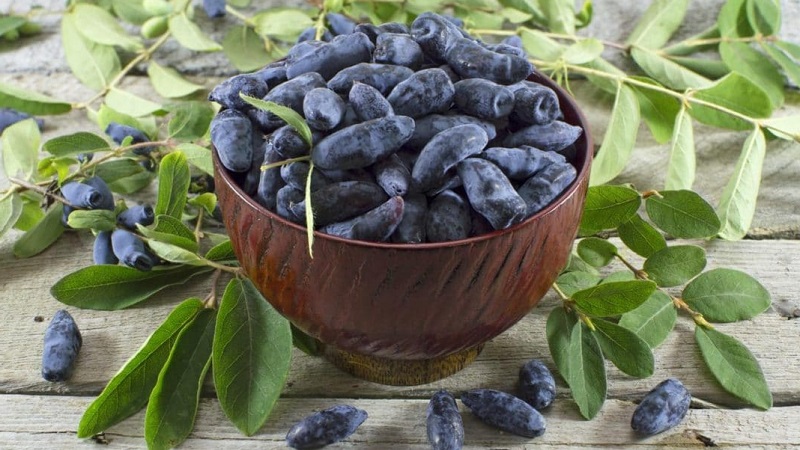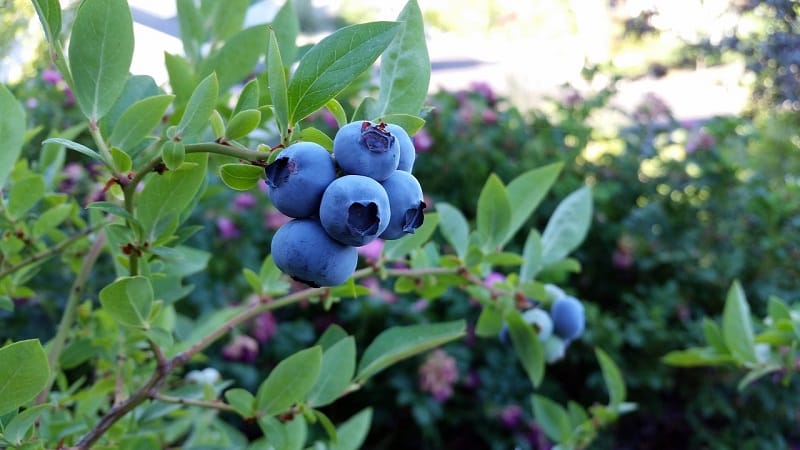What do honeysuckle berries taste like: description of taste qualities
Is honeysuckle tasty or not? The answer to this question worries those who have never tried these fruits. The taste qualities of honeysuckle have allowed it to find worthy use in cooking. The oblong berries with dark blue skin covered with a bluish coating have a unique taste. It is often compared to the taste of strawberries, blueberries, blueberries or black currants. The tender and juicy pulp contains many vitamins, minerals and has many beneficial properties, which we will tell you about.
What does edible honeysuckle taste like?
There are many in the world varieties of edible honeysuckle. They differ in fruit size and taste.
The sweetest Altair varieties are considered Gourmand, Dessert, Pavlovskaya, Amphora, Slav, Bullfinch, Nymph, Souvenir.
Popular large-fruited varieties: Bazhovskaya, Cinderella, Azure, Enchantress, Long-fruited, Chosen One, Morena.
The culture has won particular love among gardeners with unshedding fruits: Fire Opal, Highlight, Omega, Nightingale, Azure, Borel, Roxana. The berries hang on the branches for a week and become even sweeter.
Reference. There are so many varieties of edible honeysuckle that every gardener will find one that suits his taste.
The length of the fruit does not exceed 2 cm, the pulp is tender and juicy, and the skin is barely noticeable. There are no hard seeds inside, except for small seeds that are almost not felt when eaten.

The fruits of edible honeysuckle are easily recognized by the color of their skin. - blue or dark blue with a bluish waxy coating. The taste of the berries is delicate and pleasant. Depending on the variety, honeysuckle can be sweet, sour-sweet, with a subtle bitterness or without it at all.
Fruits collected from the same bush can also differ in taste depending on the age of the crop, light level and soil composition. In addition, if the plant does not have enough moisture, the pulp begins to taste bitter.
Is honeysuckle edible and what does it taste like?
The taste of edible honeysuckle berries is unique. It is difficult to compare it with the taste of other berries or fruits. Consumers detect the taste of blueberries, blueberries, black currants and even plums in the berries..
The taste of unripe fruits resembles a mix of blueberries and lingonberries. As it ripens, the sugar content increases and it becomes strawberry-like with a slight sourness and bitterness.
From gardeners Early ripening varieties that begin to bear fruit in the 20th of May are popular. The description of honeysuckle Mania of Taste states that its fruits are distinguished by their elongated shape and dark blue skin color. The pulp of the fruit is tender, very juicy, sweet, dessert with a slight sourness. In addition, the variety is resistant to fruit shedding, which retains freshness for a long time after harvest.
Comparison of honeysuckle and blueberry
Honeysuckle and blueberries: are their properties similar? Honeysuckle fruits are rich in vitamin A, beta-carotene, vitamins B1, B2, C, K. The berry contains potassium, calcium, magnesium, iron, phosphorus and sodium. The calorie content of 100 g of product is only 39 kcal, and the benefits for the body are undeniable.

Found in the pulp of edible honeysuckle tannins, which determine its tart taste. The fruits of the bush are called a natural antiseptic.Moderate consumption has an anti-inflammatory and hemostatic effect.
Pectins normalize intestinal microflora, relieve bloating and digestive disorders, suppress the growth of pathogenic microorganisms, bind and remove free radicals, as well as radionuclides.
The fruits are recommended to be consumed for colds and vitamin deficiency., especially in winter and spring. They contain a large amount of vitamin C, which has a general strengthening effect and supports the body's defenses.
The berries are used to thin mucus in the bronchi.. In addition, they have expectorant properties, heal trophic ulcers, burns, lichen and other skin damage.
Honeysuckle is good for hypertensive patients and people suffering from diseases of the gastrointestinal tract. Regular consumption normalizes blood pressure and reduces stomach acidity. The digestive system begins to work like clockwork thanks to a mild laxative effect.
Those, Those who regularly feast on honeysuckle note an improvement in their complexion, a surge of strength and vitality, improved appetite. Honeysuckle fruits are indicated for diseases of the musculoskeletal system due to their high calcium content.
Doctors recommend leaning on berries for the prevention of anemia, tuberculosis and malaria. They strengthen blood vessels, capillaries and generally support the functioning of the cardiovascular system.
Now let's talk about the beneficial properties of blueberries. Many people are looking forward to blueberry season. And for good reason! This berry has a pleasant, delicate taste and is also known for many beneficial properties. Like honeysuckle, blueberries contain a lot of vitamins C, A, B1, as well as vitamins B6 and PP, magnesium, phosphorus, potassium, copper and iron. The calorie content of 100 g of berries is slightly higher than that of honeysuckle and amounts to 45 kcal.

Blueberries contain antioxidants, known for antitumor properties. Regular use of the product reduces the risk of developing cancer in adults and children.
Reference. For comparison: 100 g of honeysuckle contains 6.6 g of carbohydrates (sugars), 100 g of blueberries - 9.73 g.
Blueberries, like honeysuckle, contain pectins., normalizing the functioning of the digestive system. The berries have antiseptic and antibacterial natural properties. They are used to treat the respiratory system. Young children are given berries to treat cough. Dried blueberries are useful for constipation and intestinal disorders.
Since ancient times blueberries are used to normalize the menstrual cycle and treat diseases of the genitourinary system and liver. Berries are good for diabetics due to their ability to lower blood sugar levels. They are used to prevent colds, cardiovascular and endocrine diseases.
Thus, the fruits of both shrubs have a beneficial effect on the body, replenish vitamins and minerals, restore the functioning of internal organs and improve well-being.
Conclusion
Not everyone knows what honeysuckle berries taste like. This is due to the low prevalence of the culture. The fruits can be found in the markets of summer residents or in some chain supermarkets. However, everyone who has managed to evaluate the taste of honeysuckle notes its pleasant, slightly tart, sweet or sweet-sour taste. The taste of the berries is reminiscent of blueberries, strawberries, plums, blueberries and even black currants; they have an attractive oblong shape and thin skin.
The beneficial properties of honeysuckle and blueberries are similar.The fruits have a beneficial effect on the body, replenish vitamins and minerals, and normalize the functioning of internal organs.